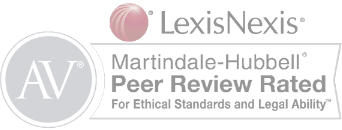What Constitutes Workplace Harassment


- Overt Harassment: This includes explicit offensive actions, such as racial slurs, sexual comments, or physical violence. It often is most recognizable and can severely degrade the office environment.
- Covert Harassment: This form of harassment is subtler but can be just as damaging. It might include spreading rumors about an employee, frequently interrupting someone during meetings, or consistently assigning them less desirable tasks without a valid reason.
- Digital Harassment: As workplaces become increasingly digital, online harassment is on the rise. This can encompass bullying via emails, social media platforms, or other digital communication channels.
Workplace harassment can stem from various motivations, often linked to an individual’s protected characteristics under anti-discrimination laws. These can include, but are not limited to, factors like:
- Gender: Harassment based on an individual’s sex or gender identity, including unwelcome sexual advances or comments.
- Race: Discriminatory behavior or comments targeted towards an individual’s race, ethnicity, or national origin.
- Age: Targeting individuals based on their age, particularly prevalent with older employees.
- Disability: Harassment rooted in an individual’s physical or mental disabilities.
- Religion: Disparaging remarks or actions towards an individual based on their religious beliefs or practices.
Workplace harassment can have far-reaching impacts on an individual and the overall work environment. It can lead to scenarios like wrongful termination, where an employee is let go due to the harassment rather than their job performance, or the misclassification of employees, a common issue in California where employees are wrongly classified as exempt to deny them certain benefits and protections.
Preventing and Addressing Workplace Harassment
Workplace harassment is a critical concern that necessitates thorough understanding and proactive measures from employers. Prevention and resolution require an integrated approach involving training, policy enforcement, and legal support when necessary. Below is a comprehensive list of strategies for preventing and addressing workplace harassment:
- Comprehensive Training: Every organization must invest in thorough and consistent training programs to ensure all employees, including management, understand the definitions, implications, and consequences of workplace harassment. Such training should include role-plays, real-life scenarios, and case studies, equipping employees with the tools to recognize and respond to instances of harassment.
- Clear Company Policies: Companies should have a well-defined, accessible policy outlining acceptable behavior, consequences for violating these rules, and a robust grievance redressal mechanism. These policies should be communicated regularly and embedded in the company culture.
- Prompt Response to Complaints: All complaints of harassment must be taken seriously, promptly investigated, and addressed without bias. Quick action not only provides immediate relief to victims but also sends a strong message to the workforce that harassment will not be tolerated.
- Supportive Environment: Employers should cultivate an atmosphere that encourages open communication and respects individuals’ rights. Employees should feel comfortable reporting harassment without fear of retaliation.
- Confidentiality: To protect the rights of all parties involved, maintaining confidentiality is crucial during the investigation of a harassment complaint.
- Legal Advice and Support: Despite these preventative measures, situations may arise where an employee finds themselves in an unresolved hostile work environment. In these instances, legal support from a seasoned attorney, John P. Martin, is crucial.
- Follow-up Actions: After addressing a complaint, employers must ensure that the resolution is implemented effectively. This might involve regular check-ins with the victim to ensure their well-being, counseling sessions, or additional training to prevent recurrence.
Employers have a responsibility to create a safe and inclusive work environment. By proactively preventing and effectively addressing workplace harassment, companies not only protect their employees but also reinforce a culture of respect and dignity.
Choose the Right Legal Support for Workplace Harassment
Workplace harassment can be detrimental to an employee’s professional and personal life, and it is often a complex issue to navigate legally. That’s where the support of John P. Martin becomes crucial. Armed with years of experience, he offers a robust legal defense for those facing workplace harassment. It’s important to note that there are time limitations, known as the statute of limitations, for filing harassment claims. Acting promptly and seeking legal advice is essential to protect your rights and maximize your chances of obtaining justice.
The law is there to protect you, and with the right legal advice, you can assert your rights and protect your career. If you’re experiencing workplace harassment, don’t endure in silence. Reach out to John P. Martin, your San Diego employment attorney, to discuss your case and explore the best avenues for justice and resolution.





